Resources
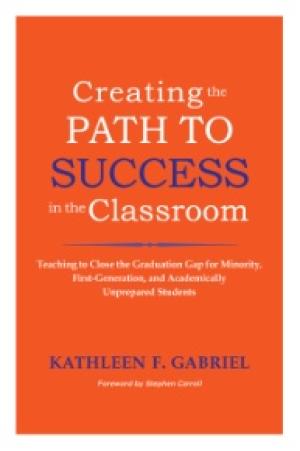
Click Here for Book Review This is a book for all faculty who are concerned with promoting the persistence of all students whom they teach. Most recognize that faculty play a major role in student retention and success because they typically have more direct contact with students than others on campus. However, little attention has been paid to role of the faculty in this specific mission or to the corresponding characteristics of teaching, teacher-student interactions, and connection to student affairs activities that lead to students’ long-term engagement, to their academic success, and ultimately to graduation. At a time when the numbers of underrepresented students – working adults, minority, first-generation, low-income, and international students – is increasing, this book, a companion to her earlier Teaching Underprepared Students, addresses that lack of specific guidance by providing faculty with additional evidence-based instructional practices geared toward reaching all the students in their classrooms, including those from groups that traditionally have been the least successful, while maintaining high standards and expectations. Recognizing that there are no easy answers, Kathleen Gabriel offers faculty ideas that can be incorporated in, or modified to align with, faculty’s existing teaching methods. She covers topics such as creating a positive and inclusive course climate, fostering a community of learners, increasing engagement and students’ interactions, activating connections with culturally relevant material, reinforcing self-efficacy with growth mindset and mental toughness techniques, improving lectures by building in meaningful educational activities, designing reading and writing assignments for stimulating deep learning and critical thinking, and making grade and assessment choices that can promote learning. (From the Publisher)
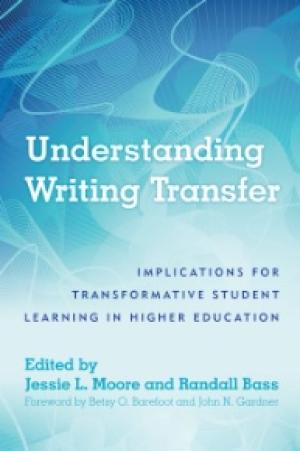
Understanding Writing Transfer: Implications for Transformative Student Learning in Higher Education
While education is based on the broad assumption that what one learns here can transfer over there– across critical transitions – what do we really know about the transfer of knowledge? The question is all the more urgent at a time when there are pressures to “unbundle” higher education to target learning particular subjects and skills for occupational credentialing to the detriment of integrative education that enables students to make connections and integrate their knowledge, skills and habits of mind into a adaptable and critical stance toward the world. This book – the fruit of two-year multi-institutional studies by forty-five researchers from twenty-eight institutions in five countries – identifies enabling practices for, and five essential principles about, writing transfer that should inform decision-making by all higher education stakeholders about how to generally promote the transfer of knowledge. This collection concisely summarizes what we know about writing transfer and explores the implications of writing transfer research for universities’ institutional decisions about writing across the curriculum requirements, general education programs, online and hybrid learning, outcomes assessment, writing-supported experiential learning, e-portfolios, first-year experiences, and other higher education initiatives. This volume makes writing transfer research accessible to administrators, faculty decision makers, and other stakeholders across the curriculum who have a vested interest in preparing students to succeed in their future writing tasks in academia, the workplace, and their civic lives, and offers a framework for addressing the tensions between competency-based education and the integration of knowledge so vital for our society. (From the Publisher)
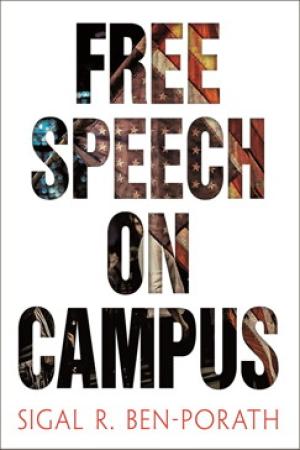
Click Here for Book Review From the University of California, Berkeley, to Middlebury College, institutions of higher learning increasingly find themselves on the front lines of cultural and political battles over free speech. Repeatedly, students, faculty, administrators, and politically polarizing invited guests square off against one another, assuming contrary positions on the limits of thought and expression, respect for differences, the boundaries of toleration, and protection from harm. In Free Speech on Campus, political philosopher Sigal Ben-Porath examines the current state of the arguments, using real-world examples to explore the contexts in which conflicts erupt, as well as to assess the place of identity politics and concern with safety and dignity within them. She offers a useful framework for thinking about free-speech controversies both inside and outside the college classroom, shifting the focus away from disputes about legality and harm and toward democracy and inclusion. Ben-Porath provides readers with strategies to de-escalate tensions and negotiate highly charged debates surrounding trigger warnings, safe spaces, and speech that verges on hate. Everyone with a stake in campus controversies—professors, students, administrators, and informed members of the wider public—will find something valuable in Ben-Porath's illuminating discussion of these crucially important issues. (From the Publisher)
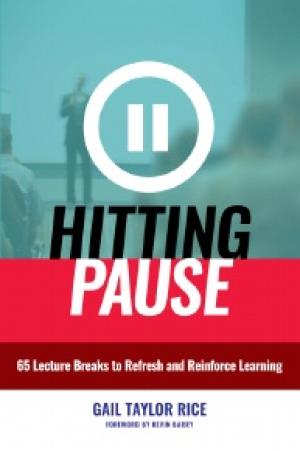
Click Here for Book Review Pauses constitute a simple technique for enlivening and enhancing the effectiveness of lectures, or indeed of any form of instruction, whether a presentation or in an experiential setting. This book presents the evidence and rationale for breaking up lectures into shorter segments by using pauses to focus attention, reinforce key points, and review learning. It also provides 65 adaptable pause ideas to use at the opening of class, mid-way through, or as closers. Starting with brain science research on attention span and cognitive load, Rice bases her book on two fundamental principles: shorter segments of instruction are better than longer ones, and learners who actively participate in instruction learn better than those who don’t. Pausing helps teachers apply these principles and create student engagement without requiring major changes in their lesson plans. With careful planning, they can integrate pauses into learning sessions with ease and significantly reinforce student learning. They will also gain feedback on students’ comprehension. Rice sets out the characteristics of good pauses, gives advice on how to plan them and how to introduce them to maximum effect. She provides compelling examples and concludes with a repertory of pauses readers can easily modify and apply to any discipline. This book contains a compendium of strategies that any teacher can fruitfully use to reinforce learning, as well as a stepping stone to those seeking to transition to more active learning methods. It: • Makes the case for using pauses • Identifies the primary functions of pauses: focusing, refocusing, enhancing retention, or closing off the learning experience • Provides research evidence from cognitive science and educational psychology • Provides practical guidance for creating quick active learning breaks • Distinguishes between starting, middle, and closing pauses • Includes descriptions, with suggested applications, of 65 pauses (From the Publisher)
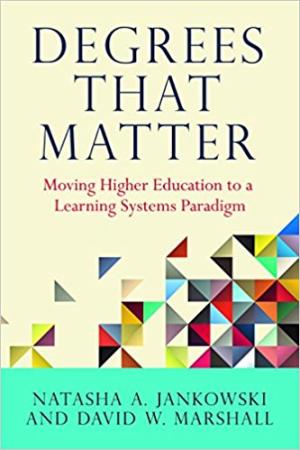
Concerned by ongoing debates about higher education that talk past one another, the authors of this book show how to move beyond these and other obstacles to improve the student learning experience and further successful college outcomes. Offering an alternative to the culture of compliance in assessment and accreditation, they propose a different approach which they call the Learning System Paradigm. Building on the shift in focus from teaching to learning, the new paradigm encourages faculty and staff to systematically seek out information on how well students are learning and how well various areas of the institution are supporting the student experience and to use that information to create more coherent and explicit learning experiences for students. The authors begin by surveying the crowded terrain of reform in higher education and proceed from there to explore the emergence of this alternative paradigm that brings all these efforts together in a coherent way. The Learning System Paradigm presented in chapter two includes four key elements—consensus, alignment, student-centeredness, and communication. Chapter three focuses upon developing an encompassing notion of alignment that enables faculty, staff, and administrators to reshape institutional practice in ways that promote synergistic, integrative learning. Chapters four and five turn to practice, exploring the application of the paradigm to the work of curriculum mapping and assignment design. Chapter six focuses upon barriers to the work and presents ways to start and options for moving around barriers, and the final chapter explores ongoing implications of the new paradigm, offering strategies for communicating the impact of alignment on student learning. The book draws upon two recent initiatives in the United States: the Tuning process, adapted from a European approach to breaking down siloes in the European Union educational space; and the Degree Qualifications Profile (DQP), a document that identifies and describes core areas of learning that are common to institutions in the US. Many of the examples are drawn from site visit reports, self-reported activities, workshops, and project experience collected by the National Institute for Learning Outcomes Assessment (NILOA) between 2010 and 2016. In that six-year window, NILOA witnessed the use of Tuning and/or the DQP in hundreds of institutions across the nation.(From the Publisher)
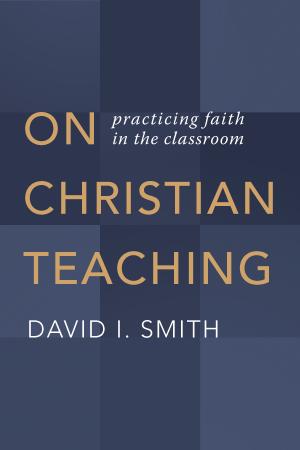
Click Here for Book Review The latest from an internationally recognized thinker at the intersection of faith and pedagogy Christian teachers have long been thinking about what content to teach, but little scholarship has been devoted to how faith forms the actual process of teaching. Is there a way to go beyond Christian perspectives on the subject matter and think about the teaching itself as Christian? In this book David Smith argues that faith has a critical role in shaping pedagogy and the learn-ing experience. Smith’s scholarly exploration of education combines both theory and practice. With clever and sometimes funny examples, he shows how teachers of every subject and age group can be atten-tive to how their students are experiencing and interpreting learning. From desk arrangement to discussion questions, there are myriad opportunities to design classes that are deeply rooted in Christian practices. On Christian Teaching provides fresh insight into Christian education that expresses faith and community. (From the Publisher)
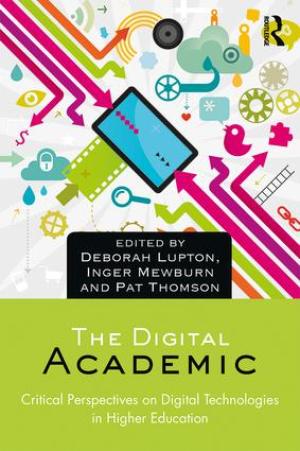
Academic work, like many other professional occupations, has increasingly become digitised. This book brings together leading scholars who examine the impacts, possibilities, politics and drawbacks of working in the contemporary university, using digital technologies. Contributors take a critical perspective in identifying the implications of digitisation for the future of higher education, academic publishing protocols and platforms and academic employment conditions, the ways in which academics engage in their everyday work and as public scholars and relationships with students and other academics. The book includes accounts of using digital media and technologies as part of academic practice across teaching, research administration and scholarship endeavours, as well as theoretical perspectives. The contributors span the spectrum of early to established career academics and are based in education, research administration, sociology, digital humanities, media and communication.(From the Publisher)
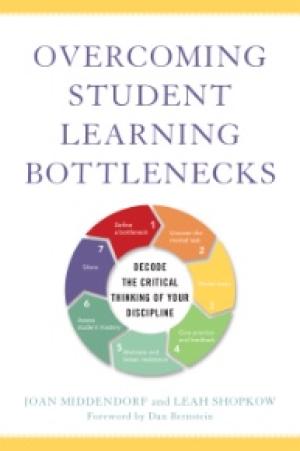
Decoding the Disciplines is a widely-used and proven methodology that prompts teachers to identify the bottlenecks – the places where students get stuck – that impede learners’ paths to expert thinking in a discipline. The process is based on recognizing the gap between novice learning and expert thinking, and uncovering tacit knowledge that may not be made manifest in teaching. Through “decoding”, implicit expert knowledge can be turned into explicit mental tasks, and made available to students. This book presents a seven-step process for uncovering bottlenecks and determining the most effective way to enable students to surmount them. The authors explain how to apply the seven steps of Decoding the Disciplines – how to identify bottlenecks, unpack the critical thinking of experts, teach students how to do this kind of thinking, and how to evaluate the degree to which students have learned to do it. They provide in-depth descriptions of each step and, at the end of each chapter, at least one exercise the reader can do on his or her own. Because the decoding process works well with groups, they also provide exercises for leading groups through the process, making available to informal groups as well as groups led by professional developers, the tools to transform their understanding of teaching and learning by getting the student view that they refer to as “the bottleneck perspective.This book uses research and personal stories from university lecturers to explore pedagogical strategies that illuminate how students’ minds can be ‘switched on’ in order to unlock their extraordinary potential. It presents diverse ways to create inspiring learning environments, in chapters written by internationally respected experts in the broad field of the social sciences. Because it focuses on the mental moves that underlie the cognitive competencies we want students to develop, spelling out what critical thinking consists of for any field, the methodology helps teachers to get beyond focus on content delivery and transmission and provides criteria to select from the bewildering array of teaching tools the methods most appropriate to what they are teaching. This is a book for faculty who want their students to develop disciplinary forms of reasoning, and are moreover interested in a methodology with the potential to transform and reinvigorate their teaching. It is particularly suitable for use in communities of practice, and should be indispensable for any one engaged in cross-disciplinary teaching, as it enables co-teachers to surface each other’s tacit knowledge and disciplinary assumptions. (From the Publisher)
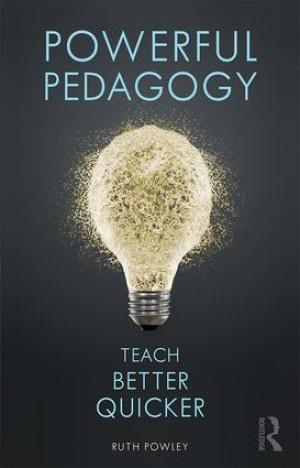
In Powerful Pedagogy, Ruth Powley, Love Learning Ideas blogger and experienced teacher and school leader, debunks teaching and learning myths and shows how the more we know about pedagogy, the more able we are to make informed and efficient choices about our practice, saving ourselves valuable time. Focusing on building sequences of learning rather than one-off lessons, it is an antidote to ‘quick fix’ books, empowering teachers as professionals in possession of ‘powerful’ pedagogical knowledge that can be used to improve teaching in a sustainable way. Powerful Pedagogy draws extensively from a wide range of educational writers and research, offering an accessible synthesis of what really works in the classroom. Together with strategies to put theories and research into practice, each chapter contains a handy list of questions for the reflective practitioner. It explores reasons for the confusion over what constitutes effective pedagogy in recent years and presents practical research-based solutions, outlining successful and efficient: Modelling of excellence Explaining for understanding Practising to fluency Questioning as assessment Testing to permanency Marking for improvement Effective planning of lessons and curriculum sequences. Powerful Pedagogy allows teachers to understand how to make the best choices about what works in the classroom, improving the quality of teaching. It is an essential companion for trainee and experienced teachers in all sectors, and for school leaders and educational trainers. (From the Publisher)
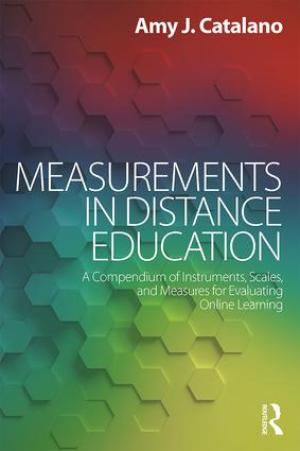
Click Here for Book Review As more postsecondary faculty become engaged in designing online learning environments, research conducted on distance education program quality becomes increasingly important. Measurements in Distance Education is a concise, well-organized guide to some of the many instruments, scales, and methods that have been created to assess distance education environments, learners, and teachers. Entries are organized according to the qualities these measures attempt to gauge—such as engagement and information retention—and provide summaries of each instrument, usage information, the history of its development, and validation, including any reported psychometric properties. Offering more than 50 different surveys, tests, and other metrics, this book is an essential reference for anyone interested in understanding distance education assessment. (From the Publisher)